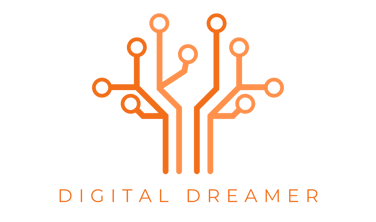The Ultimate Guide to Email Marketing: Building Meaningful Customer Connections
Digital Dreamer


Email marketing continues to be one of the most effective tools in a digital marketer’s arsenal, delivering exceptional returns on investment. With an average ROI of $36 for every $1 spent, mastering email marketing is no longer optional—it’s essential for businesses looking to grow in today’s digital landscape. While new marketing channels emerge frequently, email marketing remains a cornerstone strategy because of its ability to foster direct communication, drive conversions, and provide measurable results.
Understanding Email Marketing Fundamentals
At its core, email marketing is about building meaningful connections with your audience. Unlike social media or paid advertising, email gives you complete ownership of your communication channel. This direct line to your subscribers becomes an invaluable asset, especially as social media algorithms and advertising costs fluctuate.
The key to success lies in understanding the foundational elements of email marketing and how they work together to create campaigns that resonate with your audience.
Building a High-Quality Email List
The strength of your email marketing strategy depends on the quality of your subscriber list. Instead of focusing on growing your list quickly, prioritize building a group of engaged subscribers who genuinely want to hear from you.
Start by offering valuable lead magnets, such as comprehensive guides, exclusive resources, or practical tools that address your audience’s challenges. These incentives encourage potential subscribers to join your list willingly.
When creating sign-up forms, ensure they are simple and straightforward while clearly communicating the benefits of subscribing. Avoid adding too many fields, as this can discourage sign-ups. A seamless and user-friendly experience is key to growing a high-quality list.
Developing Effective Email Campaigns
Every email campaign should have a clear purpose that aligns with your broader marketing strategy. Whether you’re welcoming new subscribers, promoting a product, or re-engaging inactive users, your emails should serve a specific goal.
Welcome Sequences: Introduce new subscribers to your brand and set expectations for future emails.
Promotional Campaigns: Drive sales or conversions by showcasing specific products or services.
Newsletters: Keep your audience informed and engaged with regular updates and insights.
Re-Engagement Emails: Reconnect with inactive subscribers and reignite their interest in your brand.
By tailoring campaigns to specific objectives, you ensure that each email delivers value and strengthens your relationship with subscribers.
Creating Engaging Email Content
Content is the heart of email marketing. Each email should serve as a meaningful touchpoint, delivering value while advancing your business objectives.
Start with compelling subject lines that accurately reflect the content of your email. While attention-grabbing tactics might boost open rates temporarily, authenticity builds trust and long-term engagement.
Personalization is another key factor. Go beyond addressing subscribers by name—use data to tailor content based on their behavior, preferences, and past interactions. This deeper level of personalization makes subscribers feel understood and valued, increasing the likelihood of engagement.
Designing Emails for Maximum Impact
In today’s mobile-first world, email design must prioritize readability and accessibility across all devices. A clean, uncluttered layout ensures that your message is easy to digest. Use visual elements sparingly to enhance understanding, not distract from your message.
Your call-to-action (CTA) is a critical component of your email’s design. Position it as the natural conclusion to your email’s narrative, guiding subscribers toward the desired action—whether that’s making a purchase, reading an article, or exploring your website.
Segmentation and Personalization
Gone are the days of one-size-fits-all email campaigns. Segmentation allows you to tailor your messages to specific audience groups, creating more relevant and effective communication.
Consider the unique needs of different segments within your audience. For example:
New Subscribers: Provide educational content and introduce them to your brand.
Long-Time Customers: Offer exclusive discounts or early access to new products.
Inactive Subscribers: Share re-engagement campaigns to reignite their interest.
By delivering personalized, targeted content, you build stronger relationships and improve overall campaign performance.
Leveraging Automation for Efficiency
Automation is a game-changer for email marketing, enabling you to deliver personalized communication at scale. From welcome sequences to post-purchase follow-ups, automated workflows ensure that your emails reach subscribers at the right moment in their journey.
The key to successful automation is understanding your audience’s needs and identifying opportunities to add value. For example, you might automate:
Welcome Emails: Greet new subscribers and introduce them to your offerings.
Abandoned Cart Emails: Remind users of items they left behind.
Re-Engagement Campaigns: Reach out to subscribers who haven’t interacted recently.
Automation doesn’t remove the personal touch—it enhances it by ensuring timely, relevant communication.
Measuring and Optimizing Performance
To achieve long-term success, regularly analyze the performance of your email campaigns. While metrics like open rates and click-through rates are important, focus on how your emails contribute to broader business goals, such as sales or customer retention.
Use A/B testing to experiment with different subject lines, layouts, and content formats. Continuously refine your approach based on what resonates most with your audience. The goal isn’t perfection—it’s consistent improvement.
Looking Ahead
The future of email marketing is shaped by advancements in technology and evolving consumer expectations. Enhanced personalization, interactive content, and AI-driven insights are just a few trends redefining the landscape.
However, the core principle remains the same: successful email marketing is about building and maintaining meaningful connections with your audience. By staying focused on delivering value, respecting subscriber preferences, and maintaining authentic communication, you can create an email marketing program that drives lasting success.
Building a strong email marketing strategy takes time and effort, but the rewards are well worth it. By mastering the fundamentals and staying adaptable, your business can thrive in the ever-changing digital world.
Digital Dreamer
Published 04/02/2025
Stay Ahead
Explore technology and solutions for digital success. Make your online journey a successful one.
© 2025. All rights reserved.
